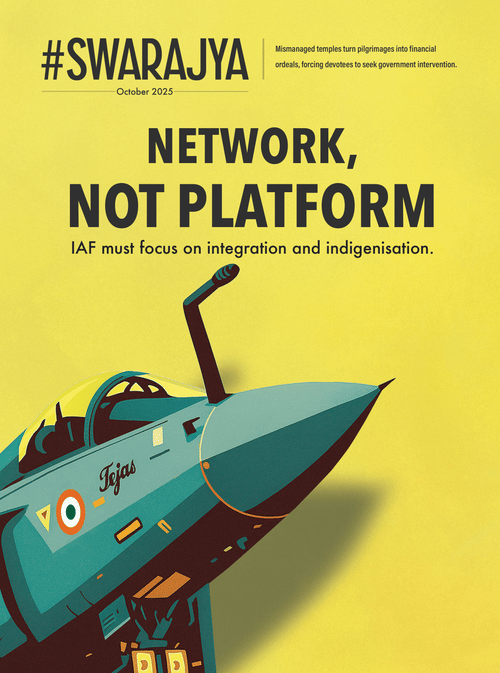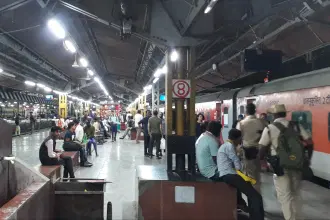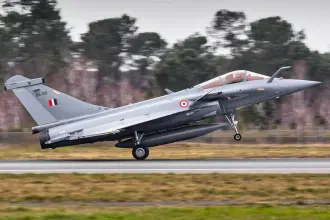Business
New Landlords? How India’s Logistics Boom Risks Becoming A Monopoly Game
Avi Modi
Oct 29, 2025, 12:18 PM | Updated 12:24 PM IST
Save & read from anywhere!
Bookmark stories for easy access on any device or the Swarajya app.
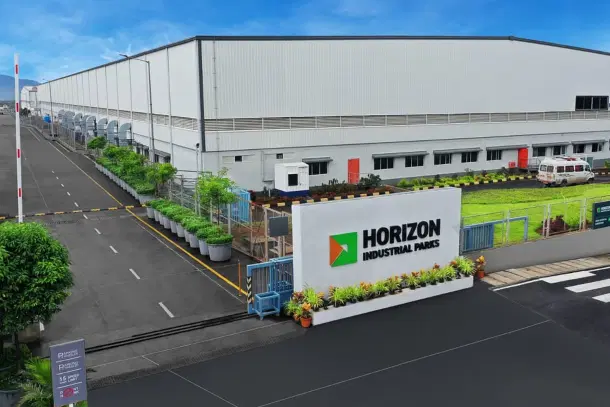
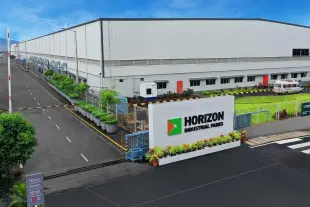
India's logistics boom is creating unprecedented opportunities, but it is also raising critical questions about market concentration and competition. As global private equity giants like Blackstone rapidly acquire vast logistics portfolios across strategic locations, policymakers must balance growth with fair competition in a sector vital to India's economic future.
Rise of Mega Parks and Policy Push
The logistics sector is experiencing rapid expansion, with modern warehousing stock projected to reach 400–533 million square feet by 2023–24. Valued at $215 billion in 2020, its growth rate is 1.2 times that of the GDP. However, logistics costs remain high at 13–14% of GDP, significantly exceeding the global average of 9–11%.
This inefficiency is primarily due to structural challenges such as a heavy reliance on road transport and fragmentation within the industry. On the other hand, significant reforms are underway to address these issues. The National Logistics Policy (NLP) of 2022 and the Comprehensive Logistics Action Plan (CLAP) promote digital solutions like the Unified Logistics Interface Platform (ULIP) to support MSMEs and encourage scalability.
Dedicated Freight Corridors (DFCs), particularly the Eastern and Western lines, are transforming transportation by increasing train speeds from 25–30 km/h to 60–70 km/h, which is expected to cut transit times and emissions by 2.25 times over three decades.
The Delhi NCR region serves as a prime example of this transformation, accounting for 19% of Grade-A warehousing space, totalling over 100 million square feet. Its strategic location at the DFC junction makes it a hub for e-commerce and manufacturing.
The rapid absorption of 60 million square feet in 2024 indicates market consolidation. Further enhancements are being made through the Bharatmala project, which has awarded 26,000 km of highways by 2024 out of a planned 34,800 km. These infrastructure developments integrate with 35 Multi-Modal Logistics Parks (MMLPs) under PM Gati Shakti, with the goal of reducing transport times by 66%.
Blackstone's Acquisition Spree: A Case Study
The most striking example of this consolidation wave is Blackstone Group's aggressive expansion strategy through its Horizon Industrial Parks platform. In just three years since its 2021 launch, Blackstone has assembled a portfolio spanning 55 million square feet across 39 parks in 10 markets.
The acquisition strategy reads like a textbook case of roll-up consolidation. The 2021 acquisition of Embassy Industrial Parks for ₹5,250 crore instantly gave Blackstone 22 million square feet across NCR, Bengaluru, and Pune.
This was followed by partnerships with Allcargo Logistics (90% stake), the acquisition of LOGOS India's warehousing assets for over ₹1,700 crore, and a 45-year partnership with Central Warehousing Corporation involving ₹700 crore investment for 13 locations.
The scale of this consolidation becomes apparent when examining specific clusters. In the crucial Farrukhnagar corridor alone, Horizon controls 9.02 million square feet, while in Ghaziabad Industrial Area, it manages 15.86 million square feet.
This concentrated ownership pattern repeats across multiple strategic locations, creating what competition experts describe as potential "unavoidable trading partners" for businesses requiring large logistics facilities.
The Competition Law Conundrum
India's Competition Commission (CCI) has historically adopted a lenient approach to consolidation within the logistics sector, approving various transactions, including Blackstone's acquisitions and recent deals involving companies like Busybees Logistics.
Under the Competition Act, 2002, this could lead to anti-competitive behaviour. Section 3 bans cartels and bid-rigging, while Section 4 targets abuse of dominance, such as hiking rents or denying access to rivals. Imagine a dominant park operator favouring big tenants like Amazon with preferential deals, locking out smaller e-tailers or discriminating against competitors' suppliers.
In a duopoly scenario, even without explicit collusion, firms might avoid price wars to protect shared investor returns.
The regulatory landscape is shifting towards increased scrutiny, particularly concerning the sharing of commercially sensitive information (CSI) and potential anti-competitive outcomes. The CCI's merger control framework, updated in 2023 with deal value thresholds and simplified review processes, offers mechanisms to address market concentration.
Despite rising consolidation, the commission has yet to block any significant logistics transactions. Nevertheless, recent investigations into courier services like DHL, FedEx, and UPS for alleged price collusion indicate a growing regulatory awareness of competition issues in logistics.
The Hidden Costs of Concentration
Consolidation in India's logistics sector, particularly in key areas like Delhi NCR, Bengaluru, and Pune, raises concerns about long-term market dynamics. This concentration of ownership could create barriers to entry for smaller businesses, lead to coordinated pricing, and stifle innovation.
Given the industry's need for proximity to consumption centres, a few dominant players controlling prime locations gain significant market control. This could negatively impact India's MSMEs, hindering their competitiveness and undermining the National Logistics Policy's goals of supporting them through improved infrastructure.
Breaking the Concentration – Why Diversify?
Concentrated control, as exemplified by Blackstone's vast real estate holdings, can lead to complacency. This dominance risks higher rents, stifled innovation, and systemic vulnerabilities if a major player falters. Furthermore, it creates barriers for small and medium-sized enterprises (MSMEs), hindering inclusive growth and contradicting National Logistics Policy (NLP) equity objectives.
Diversified ownership increases market participation, fosters competition in pricing and services, and drives technological advancements such as AI-based routing and green logistics practices. This approach builds resilience by spreading risks and stimulates local job creation through regional developers.
In Multi-Modal Logistics Parks (MMLPs), diverse stakeholders ensure broad access, aligning with the 2025 goal of achieving single-digit logistics costs.
International experiences, such as the European Union's €329 million fine for anti-competitive logistics practices, highlight the need for proactive regulatory oversight to prevent market harm from concentrated logistics sectors.
India's logistics renaissance is a cornerstone of its USD 26 trillion economy dream by 2047. But true swarajya demands markets that work for all, not just the titans.
As 2025 unfolds with LEAPS and mergers like Bharat Supply, regulators must balance growth with competition. Key measures include higher merger review thresholds for location-sensitive logistics assets, mandatory information barriers between common competitors, and incentives for MSMEs, including subsidised land near Multi-Modal Logistics Parks (MMLPs).
Skill development under the National Logistics Policy (NLP) and proactive market studies to monitor concentration will also be essential to ensure fair and sustainable growth in India's logistics ecosystem.
Avi Modi is a Mukherjee Fellow 2025–26. He is a Law and Public Policy Enthusiast, interested in exploring the intersection of policy, politics, and governance through research and writing. All views expressed are personal.
